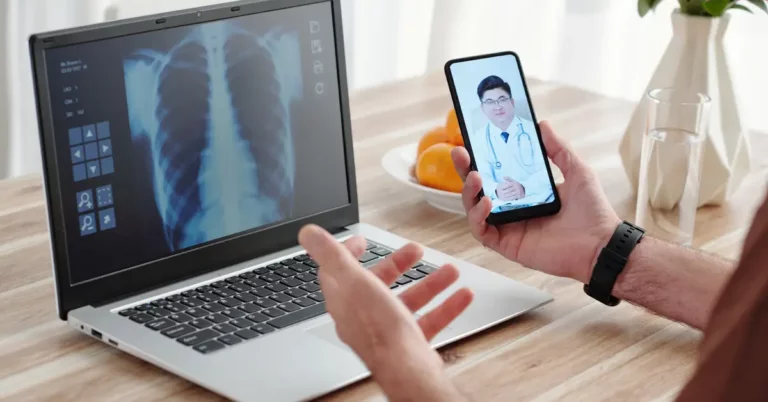As a patient, effective management of Hypostatic Hypertension is essential to reduce the risk of cardiovascular mortality. Blood pressure is one of the most important indicators of overall health, and when it rises too high, it can lead to hypertension. It is important for patients, especially the elderly, to manage hypostatic hypertension effectively to prevent serious health complications and ensure our overall well-being. Hypostatic hypertension, also known as supine hypertension or postural hypertension, is a type of high blood pressure that occurs when a person is in a horizontal or supine position, such as when lying down or sitting for extended periods. If left uncontrolled, hypostatic hypertension can increase the risk of heart disease, stroke, and kidney damage.
Therefore, it is crucial for you to take steps to effectively manage your blood pressure to prevent these serious health issues and ensure your most optimal health. Additionally, it is important to recognize the signs of rise in blood pressure in cases of orthostatic hypertension, the drop in blood pressure in cases of orthostatic hypotension, and to seek medical attention if necessary. By considering the tips and strategies outlined below, you can take control of your health and live healthier, more productive lives.
Hypostatic vs. Orthostatic Hypertension
One key difference between hypostatic and orthostatic hypertension is the position of the body. Hypostatic hypertension occurs when a person is lying down, while orthostatic hypertension occurs when a person stands up. Another significant difference is the cause of high blood pressure. Hypostatic hypertension is often caused by factors that increase blood pressure when a person is lying down, such as fluid accumulation, obesity, or certain medications. Orthostatic hypertension, on the other hand, is often caused by problems with the autonomic nervous system, which regulates heart rate and blood pressure.
Orthostatic Hypertension, Defined
Orthostatic hypertension is a type of orthostatic intolerance. It involves the postural rise in blood pressure and heart rate when transitioning from a sitting or lying position to an upright standing position. When this occurs, the body may not be able to quickly adjust to the change in blood flow and can cause an increase in both blood pressure and heart rate within three minutes of standing. If left unmanaged, this condition can progress further into more serious conditions such as stroke, arrhythmias, and even heart failure. It is important for individuals who experience this condition to monitor their blood pressure regularly while in an upright position and seek appropriate medical advice if needed.
Orthostatic Hypotension, Defined
Orthostatic hypotension is a type of low blood pressure that occurs when a person stands up, usually due to a sudden drop in blood pressure triggered by changes in the autonomic nervous system. Other causes can include dehydration, certain medications, and conditions like diabetes, anemia, and Parkinson’s disease. Prolonged bed rest or standing or sitting in hot environments can also contribute to orthostatic hypotension.
Difference of Hypertension and Hypotension
When it comes to hypertension and hypotension, both can be dangerous and should not be taken lightly. Hypertension, or high blood pressure, is a condition where the force of blood against your artery walls is too high. It can cause serious damage to your heart, kidneys, and other organs if not treated properly. On the other hand, hypotension, or low blood pressure, occurs when the force of blood against your artery walls is too low. It can result in dizziness, lightheadedness, blurred vision and fainting spells. Although both conditions can be serious and require medical attention, hypertension tends to have more serious consequences than hypotension because it increases the risk of stroke and heart attack more significantly than low blood pressure does.
Tips and Strategies in Managing Hypertension and Hypotension
There are several strategies that healthcare providers (HCP) can use to manage hypertension in their patients. These strategies may include:
- Medications: There are several medications available that can help to lower blood pressure in people with hypostatic hypertension. These may include beta blockers, angiotensin-converting enzyme inhibitors, and diuretics.
- Lifestyle changes: Making lifestyle changes, such as eating a healthy diet, exercising regularly, and avoiding tobacco and alcohol, can help to lower blood pressure and improve overall health. For people with orthostatic hypotension, in addition to the things mentioned above, there is the need to increase fluid intake and perform exercises that increases blood flow such as leg-crossing exercises.
- Blood volume management: Maintaining proper blood volume is important for maintaining normal blood pressure. This may involve increasing fluid intake or using medications to help regulate blood volume.
- Positioning: Changing body position can help to lower blood pressure in people with hypostatic hypertension. For example, sitting up or standing up can help to lower blood pressure.
- Monitoring: Regular blood pressure monitoring is crucial for managing hypostatic hypertension. This may involve taking blood pressure readings while lying down and standing up to determine any changes in blood pressure.
Managing Hypertension and Hypotension Through DrKumo Remote Patient Monitoring
DrKumo is a technology leader in highly scalable, continuous, real-time remote patient monitoring (RPM) solution for chronic disease management, acute care, post-operation, and hospital care at home program.
DrKumo AI-driven RPM solution empowers patients with hypertension and hypotension to monitor and manage their condition from the comfort of their own homes. By using medical devices such as blood pressure monitors, you can easily track and transmit their physiological data to a secure, intelligent cloud system. This data transmission helps to increase your adherence to their treatment plan and enables timely intervention by your healthcare providers before a costly care episode becomes necessary.
Takeaways
Managing blood pressure is essential to prevent serious health complications and ensure overall well-being. By implementing strategies such as taking beneficial medications, making positive lifestyle changes, managing blood volume, body positioning, and monitoring, you can effectively manage your blood pressure and improve your health outcome. To further support your health management, you and your healthcare provider can use DrKumo RPM solution to monitor and manage your health from the comfort of your own home. This innovative solution helps to increase your adherence to your treatment plan and enables timely intervention by your healthcare providers when necessary.
Contact DrKumo now and experience the effectiveness of RPM in managing hypertension and hypotension.








